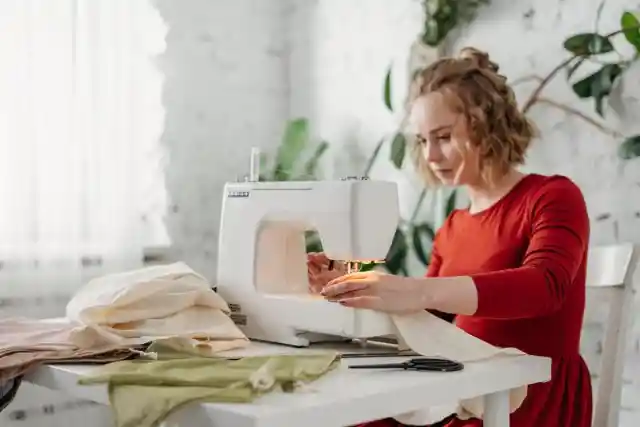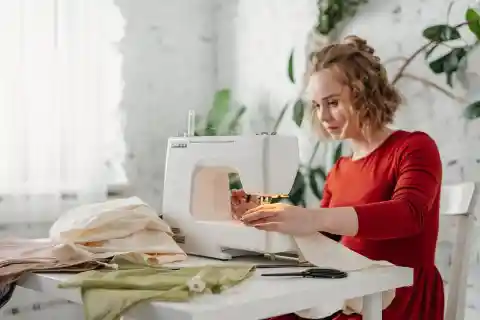10 Sustainable Fabrics For A More Eco-Conscious Fashion
By
jagriti /
Oct 13, 2023
The list of ways we consume fashion that harms our environment and other species is extensive and includes fast fashion and cotton. You've probably already heard some startling numbers about the waste produced during the creation of fabrics. But did you know that producing a single t-shirt and pair of jeans uses 20,000 gallons of water? Or that every second, a garbage truck's worth of textiles is burned or disposed of in a landfill? Besides consuming less, recycling, and mending, is it possible to find clothing and textiles that are more sustainable? Which textiles should you avoid buying if you need to buy new clothes? Here are ten materials that may help in the pursuit of a more sustainable way of life.
Hemp
Hemp seems to be popular right now everywhere. The "sober cousin" of marijuana is incredibly adaptable; it's utilized in food, construction, and cosmetics, and has been grown and used as fabric for hundreds of years. Hemp is grown all over the world, which makes it far healthier for the environment than other crops because it uses considerably less water, has no pesticides, and naturally fertilizes the soil it grows in. Hemp, one of the oldest fibers in the world, is a terrific material for clothing items that will be a staple in your wardrobe rotation for many years to come since it keeps you cool in the summer and warm in the winter and gets softer the more you wash it.
TENCEL/Lyocell
With remarkable qualities including being highly absorbent, anti-bacterial, odorless, and moisture-resistant, Lyocell is a thin fabric manufactured from wood pulp. Lyocell is biodegradable since the wood pulp is a plant-based material, which contributes to its sustainability as a fabric. The most popular brand of lyocell is Tencel. Creating cellulose fibers from wood pulp does require chemical digestion; however, the water and chemicals used in the process are frequently recyclable. This significantly reduces the number of fresh chemicals and water needed for production.
ECONYL
ECONYL is an alternative recycled material to think about. This yarn, developed by the Italian company Aquafil, is made from recycled synthetic waste, including waste fabric, industrial plastic, and ocean-sourced fishing nets. ECONYL yarn claims to be of virgin nylon yarn quality while being made from recycled materials. Compared to the production of the traditional nylon yarn, the production of ECONYL utilizes less water and produces less waste. Waste is gathered, cleansed, and shred in the production of ECONYL, which is subsequently depolymerized to yield the raw ingredient caprolactam. After being repolymerized, the caprolactam is converted into ECONYL yarn.
Cupro
Cupro is a synthetic cellulose fabric made from linter cotton (or Cotton wastes). The extracted cellulose is soaked in a chemical solution called "cuprammonium" to produce the yarn that is ready to weave, giving cupro its name. The entire procedure is closed-loop. As a result, the significant amounts of water and chemicals required to produce Cupro are continuously recycled until the point of exhaustion. The chemicals used don't include any harmful or poisonous substances for the environment or human health. Cupro is a good environmentally friendly substitute for viscose because it is also biodegradable.
Linen
The fibers of the flax plant are used to make linen. Because of its resilience, capacity to keep people cool, and capacity to absorb water, it was used by societies dating back to the ancient Egyptians. Nowadays, it does not require the use of pesticides or fertilizers when produced in geographically favorable regions, such as Europe. It also uses a lot less water than cotton and is good for the health of the soil. The cloth dries more quickly than cotton and other materials because it is durable enough to last for years.
Bamboo
Bamboo is a fast-growing, regenerative crop that does not require fertilization and is frequently marketed as a sustainable resource when mechanically processed (otherwise known as bamboo linen or bast fiber). However, there are issues with bamboo's chemical processing, which uses the same acids found in rayon viscose, and the lack of openness surrounding land destruction and harvesting techniques (something to ask a brand about before purchasing a garment). However, bamboo is a favorite of sustainable businesses because it is very absorbent, cozy, and moisture-wicking when created properly.
Modal
Mostly created from beech tree pulp, modal is a semi-synthetic fabric made from wood pulp. Although the pulp is natural, the manufacturing process uses chemicals such as sodium hydroxide, but in a far smaller quantity than is required for rayon viscose. Due to the fabric's tendency to be more delicate and softer than its lyocell sibling, underwear, pajamas, sheets, and towels frequently contain this naturally occurring yet man-made material.
Pinatex
While the pros and cons of leather and vegan leather are still up for dispute, Piatex offers a sustainable alternative to both questionable materials and animal byproducts. The substance, which Ananas Anam first created in 2017, is made from discarded pineapple leaves that would otherwise be burned. Unless it is combined with petroleum-based glue, which is occasionally the case, it can also spontaneously biodegrade.
Wool
Depending on how it is manufactured, wool can be a sustainable material. For instance, Fibershed produces Climate BeneficialTM Wool on carbon-farming landscapes that recycle carbon into the ground. Wool is also highly insulating, biodegradable, and doesn't shed microfibers made of plastic. Unfortunately, the wool sector also tolerates a lot of animal maltreatment, so it's critical to research brands and confirm their sourcing and manufacturing processes. Even while wool isn't for everyone, many sustainable manufacturers are starting to use it.
Recycled Fabric
Recycled cotton is the best kind of cotton, and this is also true of many other materials. Using recycled fabrics means you don't use up any fresh resources or materials, and you prevent fabric waste. This is the same justification we use to encourage buying used clothing. Given that conventional polyester is typically one of the worst offenders, recycled polyester is an intriguing sustainable fabric. Because it is frequently created from plastic bottles, less plastic trash is transferred to landfills, and the labor-intensive procedure that typical polyester goes through is avoided. Recycled polyester still leaks microplastics while washing, it should be noted.

